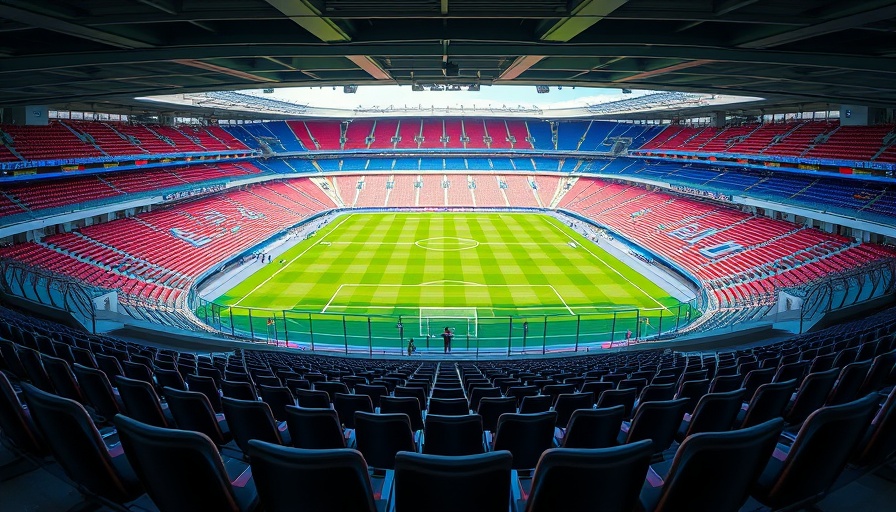
The Rise of Soccer in America
As Major League Soccer (MLS) and the National Women’s Soccer League (NWSL) flourish, soccer is cementing its place as a significant sport in the U.S. The impending 2026 FIFA World Cup only amplifies this trend, spurring venue owners and facility managers to innovate and elevate the supporter experience.
Innovative Seating Solutions for Enhanced Fan Engagement
Today’s stadium seating is more than just a place to sit; it’s about creating a communal experience. Sightline Commercial Solutions is leading the way, offering customizable seating that fosters community while ensuring safety for dedicated soccer fans. Their product range includes:
- Tip-Up Seats: Ideal for venues with steep gradients, these seats allow for the flexibility of standing while providing adequate leg space.
- Bench Seating: This design offers communal seating while maintaining a low profile to facilitate easy movement.
- Standing Rails: These rails not only provide safety but can also accommodate drinks, enriching the social aspect of watching a game.
Case Studies: Successful Implementations
To grasp the impact of these innovative seating designs, let's consider several stadiums that have successfully transformed their seating arrangements:
Mercedes-Benz Stadium: A Model of Versatility
At Mercedes-Benz Stadium in Atlanta, the seating arrangement caters to both MLS soccer and NFL football. The design ensures that fans in the supporter section feel closely tied to the action, creating an electric atmosphere during games.
Tottenham Hotspur Stadium: Seamless Adaptability
The British stadium showcases a retractable seating system that allows the venue to efficiently transition between soccer and American football events, maximizing its revenue potential.
Optus Stadium: Technology Meets Comfort
With wide padded seats and advanced LED technology, Optus Stadium in Australia offers an inclusive fan experience focused on comfort and engagement, ensuring a memorable visit for all spectators.
The Future of Stadium Seating
As architects and venue designers push the envelope, sustainability becomes a central theme. The use of eco-friendly materials and designs that reduce energy consumption is crucial. The benefits of modernized seating extend beyond just the viewing experience; they present opportunities for increased revenue and sustainability. As noted by the architects of HOK, offering fans multiple premium options not only enhances the experience but provides vital income for stadiums.
Local Insights and Broader Implications
These changes extend across the nation, illustrating how major developments in stadium design are not just about aesthetics. From safety to community engagement, the way fans experience soccer is evolving significantly. It creates a sense of belonging in supporter sections that enhance overall league and community pride.
Concluding Thoughts: The Call for Further Innovation
In conclusion, as soccer continues to grow in popularity, so must the facilities that host the games. The demand for enhanced seating solutions opens doors already being explored by visionary architects and facility managers. It’s not just about watching a game; it’s about feeling like a part of the action. The innovations in stadium seating pave the way for upcoming generations of fans to engage deeply with the sport they love.
 Add Row
Add Row  Add
Add 






Write A Comment